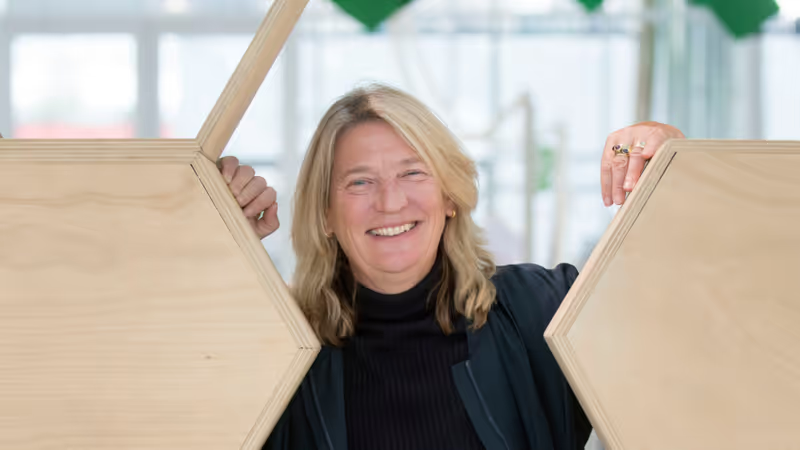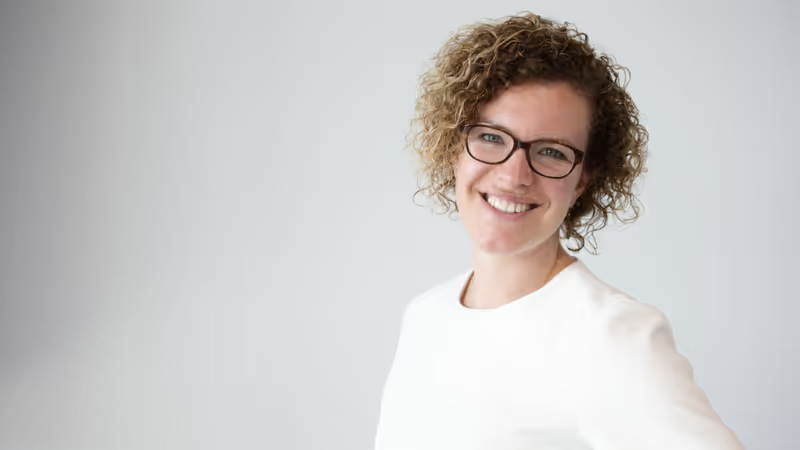Every personal story has scientific value
Working with citizens to reflect on solutions to society’s challenges. This is the path that science is treading today with increasing vigour, including in healthcare. In conjunction with the regional consortium TOPFIT Citizenlab, the University of Twente (UT) is focusing on improving citizens’ years of happiness and health with the help of technology. Parallel to this, the Citizen Science Hub was launched in Twente on 20 November 2020. In 2021, such hubs will follow in at least three other locations in Europe within the INCENTIVE project. Iedereen Wetenschapper invited UT experts Sabine Wildevuur, director of DesignLab at University of Twente, and Renske van Wijk, project leader of TOPFIT Citizenlab, for a Q&A session.
Sabine, in short, what does DesignLab do?
Sabine: “DesignLab is an ecosystem for collaboration in which we link societal challenges to education and research. The approach is based on principles from design thinking and design research. We adopt a transdisciplinary approach in which we combine the knowledge and skills of various disciplines to create new concepts with the aim of creating social impact. The three main themes of DesignLab are citizen science, responsible design and transdisciplinary work”.
How do you go about that?
Sabine: “Within citizen science, we bring together the top-down approach of researchers, which is now commonly used, with the bottom-up approach from societal challenges. Citizens can be involved in the formulation of the research question, but also in the collection and analysis of data. Within citizen science we aim to learn to understand each other’s language, learn to cooperate and align expectations.”
Renske, how did you come up with the TOPFIT Citizenlab?
Renske: “With increasing attention to the prevention of diseases or disease burden and the desire for increased self-management among patients, the patient or healthy citizen is becoming increasingly central. Technology can support the citizen and the healthcare system. Unfortunately, new technology does not always align well with its users. By adopting a citizen science approach to developing technology that contributes to greater health and well-being, we hope to use TOPFIT Citizenlab to find new solutions more quickly. We work with researchers from a range of knowledge institutions, municipalities, the business community, and healthcare organizations. An example of this type of project is Grip on Diabetes, in which Citizenlab researchers, together with diabetes patients, look for ways to manage their diabetes better. Together they try to improve the supply of diabetes care and to tailor it as much as possible to the individual. Ziekenhuisgroep Twente (ZGT), ROC van Twente, Saxion University of Applied Sciences and University of Twente are working together on this study.”
Citizenlab runs until 2022. Which outcomes do you aim to achieve by then?
Renske: “After 2022, we hope to have a sustainable Citizenlab that can exist more or less independently and connect to the needs of citizens as well as researchers, companies and governments. From a practical point of view, this means having suitable methods in place concerning how we engage with citizens, and we collaborate on solutions for greater health and well-being. In Citizenlab we have a digital, and hopefully soon physical, place where we meet and where Twente citizen scientists, knowledge institutions and healthcare professionals are connected.”
Have you already found the magical formula?
Renske: “There is no one magic solution that works for everyone. We run several ‘pilot projects’ simultaneously from which we continue to draw insights. We try to quickly translate theoretical knowledge into new ways of working with citizens, apply these ways in the pilots, and learn from this what works and what doesn’t. We strive to ensure that the applications are sustainable and that companies approach us of their own accord to develop their technology. We create this, for example, by attracting citizens who like to think along about health and solutions to feel healthy, by attracting researchers who like to work on societal challenges and also genuinely want to go into practice, by finding healthcare professionals who like to contribute ideas and to experiment, and by developing an environment of data exchange that can support this.”
What is the value of citizen science for the sciences?
Sabine: “It’s a different form of research where you can obtain research questions and results that you wouldn’t otherwise reach. With citizen science in healthcare, you can better tailor the research to what patients want. Generally speaking, research questions are developed from the researcher’s perspective, and they can differ from the questions that are on the minds of patients. With citizen science, you often have a greater social impact because it connects to questions from society. What is important is that the quality of the research remains paramount.”
Renske: “There is more understanding on both sides. Researchers gain a better understanding of practice and people who have participated in scientific research as citizen researchers better understand the value of research. This hopefully keeps you far away from ‘science is just an opinion’”.
Is there sufficient communication from the scientific community to the public?
Renske: “The question is whether it is done in the right way, at the right time and how often. Should we communicate to the public during the study? Or do we wait until the final results? Typically, scientists don’t come out with information until all the results are known, but that often takes a long time, whereas interim communication can be of value. A transparent process can ensure the trust that citizens will have in the application later on. You can see this now during the Covid-19 pandemic, where the population is informed during the process of decision-making, the road leading up to it and vaccinations. Although here we also see how difficult it is to do this properly”.
Sabine: “Researchers sometimes don’t (yet) have the answers; we’ve witnessed this in the recent corona period. That is seen by some citizens as a weakness. By involving citizens, they also learn to see what the process of science entails. Through Citizen Science you can unite different insights. For example, in DesignLab we held an ethical ‘trial’ with different groups from the population, surrounding the prototype of the Coronamelder. It was striking that the issue of privacy was barely mentioned by the participants, while the focus of the research and development of the technology was specifically on that. There are often other pain points than previously anticipated”.
DesignLab is driven by students. What is their view of citizen science?
Sabine: “DesignLab’s DreamTeam, consisting of students from different fields of study, often already feel involved in social issues. Citizen science is not yet an integral part of the curriculum. Often the focus is on getting the highest possible score with your papers. Rewarding qualities other than writing papers can contribute to exploring societal challenges and how to tackle them.
Is citizen-generated data always reliable?
Sabine: “Within scientific research, you always have to look at how to obtain reliable data and research. It’s no different for citizen science projects.”
Renske: “I second that. There is some speculation that citizen science gives room for ‘quackery’ in healthcare. However, it’s about how you connect the expertise and assumptions of citizens and science to obtain meaningful knowledge that also connects to science.”
How far is the Netherlands compared to other countries in terms of citizen science?
Sabine: “In October 2020, a report was published by the Dutch Platform Open Science that advocated for a Dutch network. We are now in the process of establishing such a network. These networks already exist in Australia, America, Germany, and the United Kingdom. With DesignLab, we started the INCENTIVE project on February 1, 2021, in which we will also set up Citizen Science Hubs outside the Netherlands in Spain, Greece and Latvia. We also work with University of Twente within the European Consortium of Innovative Universities (ECIU) in the field of citizen science, where we also seek to collaborate with other countries. For example, University of Twente has also introduced the Health working group to the European Citizen Science Association. Collaboration is crucial within citizen science, regardless of whether it is at a regional, national, European or international level.”
Renske: “The TOPFIT Citizenlab is the foundation for the new Hubs. We are building upon knowledge that was gained here. Together with the parties involved, we will then develop a method to further develop citizen science, exchange knowledge and build up a solid network. We hope within the Citizen Science Hub Twente to expand this approach to other science domains outside of healthcare”.
This interview was made by Charlotte Goeyers for Iedereen Wetenschapper







